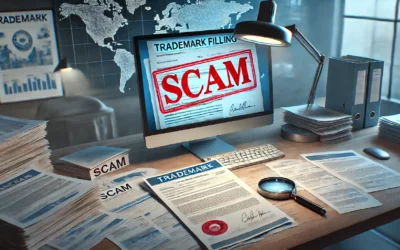The digital world is constantly evolving, and with it, the legal landscape. A recent decision by the European Union Intellectual Property Office’s (EUIPO) involving Vinicio S.R.L. brings to light the challenges of applying traditional trademark principles to virtual goods.
The case involved an opposition filed by Artessence FZC against Vinicio S.R.L.’s trademark application. Artessence is the owner of the EU trademark INITIO PARFUMS PRIVÉS. The mark is registered for perfumery and fragrances, among other products. Vinicio is an Italian luxury fashion retailer. They sought to register the trademark VINICIO for several products, including perfumery, retail of perfumery, and retail of virtual perfumery and other virtual products.
EUIPO’s decision
The EUIPO ultimately sided with Artessence for the with respect to physical products and retail of physical products. However, the EUIPO did not find likelihood of confusion between Artessence’s perfumery and Vinicio’s retail of virtual perfumery and other virtual goods.
This particular aspect of the decision, which hinged on the similarity of virtual goods to their real-world counterparts, is significant. The Opposition Division, citing the novelty of virtual goods, acknowledged the difficulty in establishing a direct comparison.
The decision highlights that the mere depiction or emulation of a real-world good in a virtual environment does not automatically establish similarity for trademark purposes. The Opposition Division stressed that, without established market practices related to virtual goods, it couldn’t rely on assumptions. Instead, the burden of proof lies with the parties to provide concrete evidence and arguments demonstrating the perceived similarity between the goods in question.
This raises several questions:
– How do we determine the complementarity of virtual and real goods?
– Can we equate distribution channels in the metaverse with those in the physical world?
– Does the target audience for a virtual good automatically mirror that of its real-world counterpart?
Way forward
These are just some of the grey areas that trademark law is grappling with in the digital age. The Opposition Division ultimately ruled that Artessence failed to prove similarity between the real-world goods covered by their trademark and the virtual goods in Vinicio’s application. It seems that this question is very much open to the arguments and evidence put forward by the parties.
Essentially, the Opposition Division made it clear that parties can’t simply assume similarity between a virtual good and a real good.
This decision underscores the importance of a nuanced approach when assessing trademark infringement in the metaverse. Factors like the specific characteristics of the virtual good, consumer perception, and market context are crucial in determining the likelihood of confusion.
While the Vinicio case provides some guidance, it also exposes the nascent stage of trademark law in relation to virtual goods. As the metaverse expands and the lines between the physical and digital continue to blur, brand owners and legal practitioners will need to navigate this evolving landscape with caution.
Establishing clear legal precedents and guidelines will be essential in ensuring fair competition and consumer protection in this exciting new frontier.
Conclusion
The Vinicio case underscores the need for a dynamic and forward-thinking approach to trademark law in the digital age. So far it is not possible to make very far-reaching conclusions from the Vinicio case. It is likely that the issue of similarity between real-life products and virtual products will be further examined and analysed by EUIPO’s Board of Appeal and ultimately the Court of Justice of the European Union. Until then, we only have a tentative view that points towards the initial dissimilarity of physical and virtual products, but is ultimately open for the parties to establish otherwise.
See more
EUIPO’s new practice tips on metaverse
Are your trademarks ready for the metaverse?
Vinicio SRL
Initio Parfums



